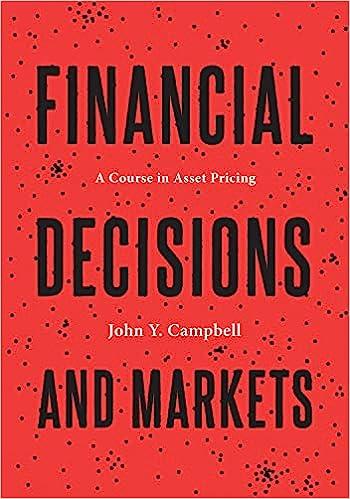Consider an economy with two dates (t=1,2) and a continuum of consumers. Each consumer receives a random
Question:
Consider an economy with two dates \(t=1,2\) and a continuum of consumers. Each consumer receives a random endowment at date 2 and consumes only then. At date 1 , securities are traded but no resources change hands until the second period. All consumers have log utility over terminal consumption.
(a) Suppose that all consumers' endowments are the same. They are \(m\) with probability \(1 / 2\), and \((1-a) m\) with probability \(1 / 2\), where \(0 (b) Now suppose that at date 2, with probability \(1 / 2\), all consumers receive \(m\); with probability \(1 / 2\), a fraction \((1-b)\) of consumers receive \(m\) and a fraction \(b\) receive \((1-a / b) m\), where \(b>a\). At date 1 , all consumers face the same probability of being in the latter group, but no insurance markets exist through which they can hedge this risk. Compute the expected return on the claim defined in part (a). Is it higher or lower than before? How does it depend on \ (a, b\), and \(m\) ? (c) Which assumptions in the model are critical for the result in part (b) and to what extent might the result hold more generally?
Step by Step Answer:

Financial Decisions And Markets A Course In Asset Pricing
ISBN: 9780691160801
1st Edition
Authors: John Y. Campbell





